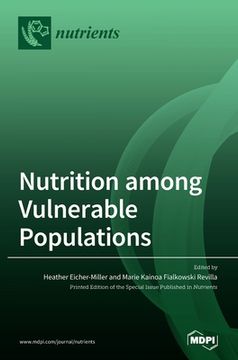Synopsis "Nutrition among Vulnerable Populations (in English)"
Food insecurity and low resources continue to be a burden influencing the health, well-being, growth, and development of millions of U.S. children and adults. Groups and individuals experiencing restrained access to food are our neighbors, individuals we may see each day, and individuals who we may not interact with or see because of their isolated situations. They include the elderly, those experiencing mental illness, veterans, certain race/ethnic groups, adolescents, young women with children, those living in rural areas, and those using food pantries, among others. Many of these groups, both hidden and visible, have rates of food insecurity above the national average that are resistant to national improvements in food security. Yet, attention to these subsets of the population is imperative to improve U.S. health and nutrition and to reduce rates of chronic disease. Many groups face specific barriers to maintaining sufficient food, for example, rural populations may find it difficult to access federal food assistance or other resources such as food pantries and nutrition education because of distance or lack of consistent internet access separating them from these resources. Further, their remote locations may make it difficult to obtain the types of foods that they prefer. Other specific barriers may include limited facilities and equipment for food preparation, access to culturally appropriate foods and preparation supplies, and foods that complement the foods that they already have. Tailored approaches to quantify access to food, the nutrition environment, dietary intake, and other barriers are necessary to build successful interventions and to quantify the needs of these populations.

